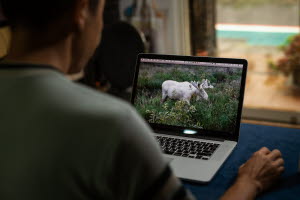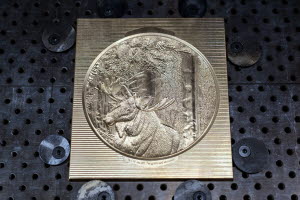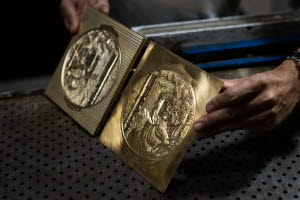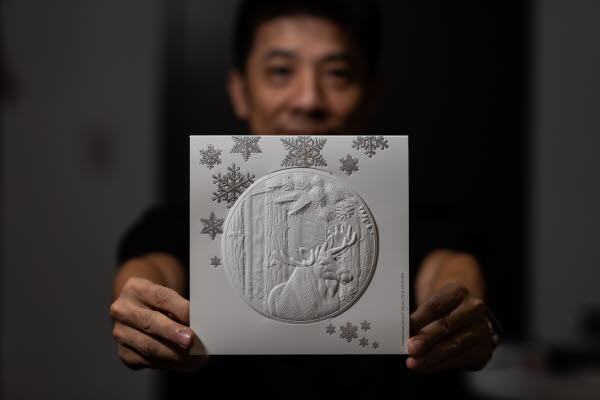The 2018 greeting card consists of several parts, all of which are decorated with blind embossing and hot foil stamping. The moose on the front of the card is a very deep and detailed blind embossing on several levels, which required meticulous care both with the motif and during the production process.
“The structure of the moose’s fur and the details of its face were by far the hardest to achieve,” Chen says, describing his work on the 2018 greeting card for Holmen Iggesund.
The large, detailed and deep blind embossing of a moose is done on several levels down to a maximum depth of 5 mm.
“For every millimetre you add to the height, you double the degree of difficulty,” Kevin Chen explains. “The work requires two tooled copper dies which both reproduce the motif and are extremely well aligned to each other.”
Despite this, he believes it is still possible to do even deeper embossing, for example by spraying water on the surface to be embossed. However, this can scarcely be done with series production, instead requiring a handcrafting method.




“With lower types of embossing, you only need to have one tool to produce the pattern and the other side is a flat make-ready. But to achieve the combination of depth and several levels, both parts of the tool must be shaped.
“Embossing places tough demands on the paperboard due to the physical strain and the increased temperature caused by the encounter between the paperboard and the embossing tool. At the same time, the paperboard must be able to reproduce fine details. In my view, Invercote Duo’s strength properties and physical durability are ideal for embossing.”
The secret behind Invercote’s strength properties is that the paperboard is constructed in three layers. This makes it possible to vary the fibre composition and thereby to control the physical properties.
Kevin Chen enjoys talking about the technical details and the importance of choosing the best possible material, in this case Invercote, which he got to know in a project some years ago. However, the most important factor is still experience, particularly if the embosser wants to test the boundaries of what is possible.

“You have to learn how to handle the pressure being applied during the embossing process,” he explains. “And that experience is totally decisive for the end result.”
“Invercote has a dimensional stability and flexibility which make it a fantastic choice for people who want to use embossing to give their printed material a third dimension. When a project calls for finishing processes that require multiple press passes, like this greeting card, Invercote’s dimensional stability provides exceptional registration. It is the multilayer construction of Invercote, in other words the long and short fibres in combination with the special coating, that makes it possible to achieve such a fantastic result.”
Alex Guglielmi, Technical Service Manager at Holmen Iggesund

